In Irish dairying, 74% of heifers calve down between 22 and 26 months of age. By comparison, only 23% of beef heifers calve down at this age. Why is this?
In an effort to improve farm efficiency from a financial, and now an environmental point of view, Teagasc has been hosting farm walks on farms and some of its agricultural colleges that are consistently calving down heifers at two years of age with great success.
The Irish Farmers Journal attended a walk organised by Teagasc Mayo on the farm of Michael and Niall Biggins, Headford, Co Galway. The father-and-son team run a herd of 60 continental spring-calving cows in the north Galway region and are now part of the Teagasc Future Beef Programme.
Local adviser Alan Nolan highlighted some of the key benefits from Teagasc research in Grange regarding calving beef heifers at 24 months.Research from Grange has highlighted that, based on a 50-cow herd with a 20% replacement rate, each additional month that calving is delayed costs €490, or €50 per heifer per month.
These figures were based on 2018 input costs, with an estimated increase of 20% for 2022. Highlighting the environmental benefits, Nolan pointed out the research from Grange points to a 12% reduction of a farm’s carbon footprint where farmers opted to calve at 24 months in lieu of 36 months.
This reduction was primarily focused on the 24-month heifers producing more beef across their lifetime. ICBF data from 2011-born heifers highlighted that 39% of heifers that calved from 23 to 26 months of age reached fifth parity (five calvings).
Only 4% of those heifers that calved at 31 to 35 months reached fifth parity, while 0% of heifers calved over the age of three had a fifth calving recorded. Not only would the farm see benefits from a lower stocking rate with calving at 24 v 36 months, but data points to a lower replacement rate as well.
The same ICBF data also dispelled the belief that reducing the age at which heifers calve down for the first time leads to a smaller mature cow with reduced calving ability when calving as a maiden.
Mature cow weight of heifers calving at 23 to 26 months averaged 708kg, while those calving at 31 to 35 months had an average mature weight of 692kg.
In order for heifers to be a suitable weight for calving and breeding, farmers were told that careful management from birth to calving is required.
Earlier-born heifers from the best cows in the herd should be earmarked for breeding replacements. Heifers should be sourced from cows with a low calving interval, consistently deliver high-quality calves and have high maternal replacement figures of €100 or greater.
A target weaning weight for these heifers is 280kg to 320kg. In order to achieve this, heifers with a birth weight of 45kg require an ADG of 1.1kg from birth to weaning.
Dosing and vaccination protocols should be completed as and when required to avoid any setbacks in heifer growth, with frequent faecal egg and weighing essential tools in the farmer’s belt.
Heifers need to be targeted with +70 DMD silage ad-lib in addition to 1kg to 2kg of concentrates across the winter housing period.
The target growth of the winter period is 0.6/kg per day. This should leave heifers coming out of the shed in early/mid-March between 335kg and 375kg.
Michael and Niall are running on free-draining soil, so early turnout is possible.
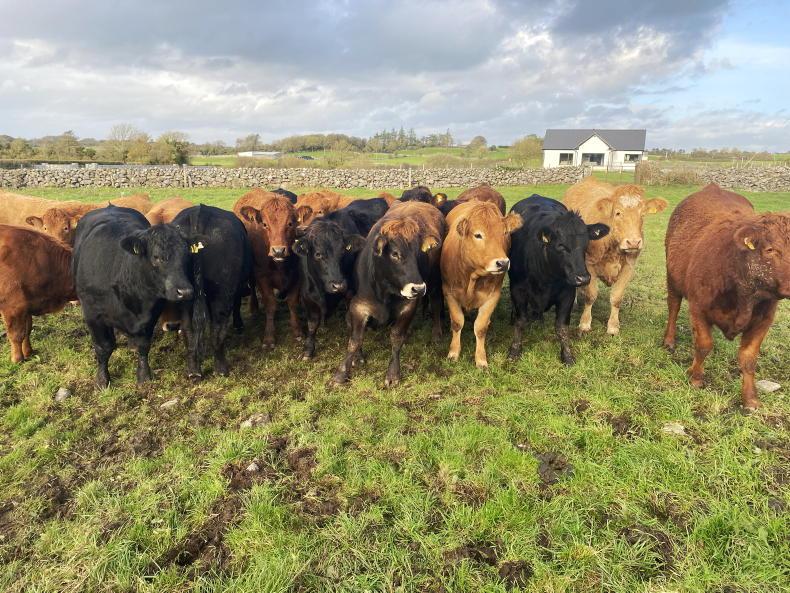
In-calf heifers on the farm are on target for weight as they enter into the shed for their second winter.
Between turnout and bulling, compensatory growth should kick in which will see heifers gaining 1kg/day.
Where turnout is delayed, a shorter period in compensatory growth can be seen which may lead to heifers being behind target weight.
Grassland management
At bulling, heifers should be 380kg to 420kg (60% of their mature body weight). Good grassland management is required throughout the breeding season right up to winter housing to ensure adequate energy is going into the heifers.
Grassland management on the Biggins farm is excellent, with reels and temporary posts used to manage swards. Where heifers are grazing poor swards of grass or grass supply is tight, embryo losses, reduced fertility or reduced growth of the heifer can occur.
Heifers are housed at 19 to 20 months for their second winter at 540kg to 570kg.
The Biggins family keep the in-calf heifers separate from the mature cows, targeting them again with high DMD silage to maintain energy intake.
Target weight at calving down is 550kg to 590kg, 80% of the mature body weight.
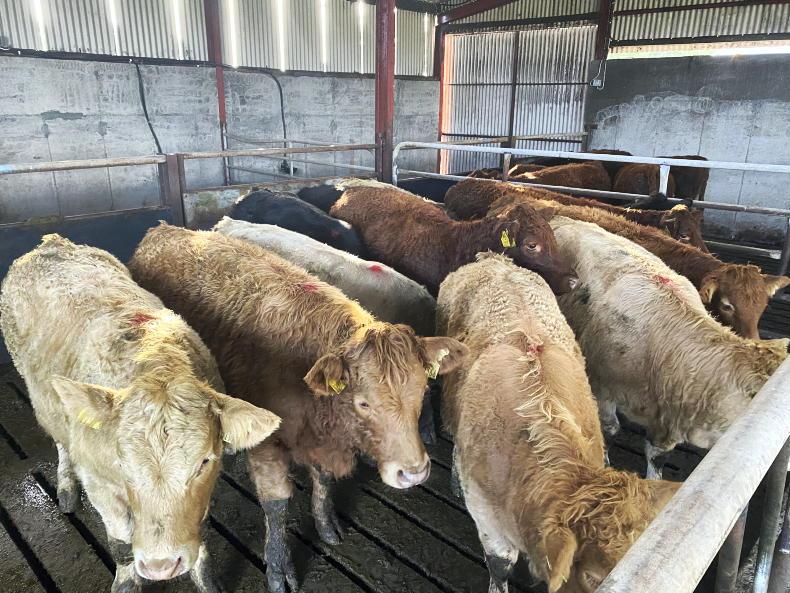
Replacement heifers have already been earmarked among the weanlings on the Biggins farm.
While energy intake in the in-calf heifers is critical, Niall is cautious of both heifers and cows becoming overly fat, leading to calving issues, so he regularly body condition scores (BCS) both cows and heifers and adjusts their diet accordingly.
Synchronised breeding and bull selection
Farmers in attendance were also told of the role that synchronised AI can play for replacement heifers. With 60 cows on the farm, the Biggins run two to three bulls with very little AI used due to Niall working off farm.
In this situation, an easy-calving bull for replacement heifers is kept. For the average suckler farm with one bull, synchronised AI on heifers is a low cost and relatively low labour option that will prevent farmers having to frequently change a stock bull or buy in all replacement heifers.
Progesterone (in the form of a PRID or CIDR) is not required in a heifer regime as heifers should be cyclic and will only require a prostaglandin-based regime. The simplest and least labour-intensive way to complete this is to give maiden heifers two shots of prostaglandin (PG) 11 days apart.
Heifers will come in to heat within two to four days with a 65% to 70% conception rate. This will allow farmers to calve the bulk of their heifers in a compact window, preferably at the beginning of the calving season to give them sufficient time to begin cycling before their second breeding season.
Bull selection when using AI is also important. Each farm and farmer has their own requirement and parameters when choosing a bull. However, when completing AI on heifers, a bull should be less than 7.5% calving difficulty at 80% reliability before he should be considered. This goes for stock bulls as well.
After this, farmers can filter through the other indices depending on their needs.
In Irish dairying, 74% of heifers calve down between 22 and 26 months of age. By comparison, only 23% of beef heifers calve down at this age. Why is this?
In an effort to improve farm efficiency from a financial, and now an environmental point of view, Teagasc has been hosting farm walks on farms and some of its agricultural colleges that are consistently calving down heifers at two years of age with great success.
The Irish Farmers Journal attended a walk organised by Teagasc Mayo on the farm of Michael and Niall Biggins, Headford, Co Galway. The father-and-son team run a herd of 60 continental spring-calving cows in the north Galway region and are now part of the Teagasc Future Beef Programme.
Local adviser Alan Nolan highlighted some of the key benefits from Teagasc research in Grange regarding calving beef heifers at 24 months.Research from Grange has highlighted that, based on a 50-cow herd with a 20% replacement rate, each additional month that calving is delayed costs €490, or €50 per heifer per month.
These figures were based on 2018 input costs, with an estimated increase of 20% for 2022. Highlighting the environmental benefits, Nolan pointed out the research from Grange points to a 12% reduction of a farm’s carbon footprint where farmers opted to calve at 24 months in lieu of 36 months.
This reduction was primarily focused on the 24-month heifers producing more beef across their lifetime. ICBF data from 2011-born heifers highlighted that 39% of heifers that calved from 23 to 26 months of age reached fifth parity (five calvings).
Only 4% of those heifers that calved at 31 to 35 months reached fifth parity, while 0% of heifers calved over the age of three had a fifth calving recorded. Not only would the farm see benefits from a lower stocking rate with calving at 24 v 36 months, but data points to a lower replacement rate as well.
The same ICBF data also dispelled the belief that reducing the age at which heifers calve down for the first time leads to a smaller mature cow with reduced calving ability when calving as a maiden.
Mature cow weight of heifers calving at 23 to 26 months averaged 708kg, while those calving at 31 to 35 months had an average mature weight of 692kg.
In order for heifers to be a suitable weight for calving and breeding, farmers were told that careful management from birth to calving is required.
Earlier-born heifers from the best cows in the herd should be earmarked for breeding replacements. Heifers should be sourced from cows with a low calving interval, consistently deliver high-quality calves and have high maternal replacement figures of €100 or greater.
A target weaning weight for these heifers is 280kg to 320kg. In order to achieve this, heifers with a birth weight of 45kg require an ADG of 1.1kg from birth to weaning.
Dosing and vaccination protocols should be completed as and when required to avoid any setbacks in heifer growth, with frequent faecal egg and weighing essential tools in the farmer’s belt.
Heifers need to be targeted with +70 DMD silage ad-lib in addition to 1kg to 2kg of concentrates across the winter housing period.
The target growth of the winter period is 0.6/kg per day. This should leave heifers coming out of the shed in early/mid-March between 335kg and 375kg.
Michael and Niall are running on free-draining soil, so early turnout is possible.

In-calf heifers on the farm are on target for weight as they enter into the shed for their second winter.
Between turnout and bulling, compensatory growth should kick in which will see heifers gaining 1kg/day.
Where turnout is delayed, a shorter period in compensatory growth can be seen which may lead to heifers being behind target weight.
Grassland management
At bulling, heifers should be 380kg to 420kg (60% of their mature body weight). Good grassland management is required throughout the breeding season right up to winter housing to ensure adequate energy is going into the heifers.
Grassland management on the Biggins farm is excellent, with reels and temporary posts used to manage swards. Where heifers are grazing poor swards of grass or grass supply is tight, embryo losses, reduced fertility or reduced growth of the heifer can occur.
Heifers are housed at 19 to 20 months for their second winter at 540kg to 570kg.
The Biggins family keep the in-calf heifers separate from the mature cows, targeting them again with high DMD silage to maintain energy intake.
Target weight at calving down is 550kg to 590kg, 80% of the mature body weight.

Replacement heifers have already been earmarked among the weanlings on the Biggins farm.
While energy intake in the in-calf heifers is critical, Niall is cautious of both heifers and cows becoming overly fat, leading to calving issues, so he regularly body condition scores (BCS) both cows and heifers and adjusts their diet accordingly.
Synchronised breeding and bull selection
Farmers in attendance were also told of the role that synchronised AI can play for replacement heifers. With 60 cows on the farm, the Biggins run two to three bulls with very little AI used due to Niall working off farm.
In this situation, an easy-calving bull for replacement heifers is kept. For the average suckler farm with one bull, synchronised AI on heifers is a low cost and relatively low labour option that will prevent farmers having to frequently change a stock bull or buy in all replacement heifers.
Progesterone (in the form of a PRID or CIDR) is not required in a heifer regime as heifers should be cyclic and will only require a prostaglandin-based regime. The simplest and least labour-intensive way to complete this is to give maiden heifers two shots of prostaglandin (PG) 11 days apart.
Heifers will come in to heat within two to four days with a 65% to 70% conception rate. This will allow farmers to calve the bulk of their heifers in a compact window, preferably at the beginning of the calving season to give them sufficient time to begin cycling before their second breeding season.
Bull selection when using AI is also important. Each farm and farmer has their own requirement and parameters when choosing a bull. However, when completing AI on heifers, a bull should be less than 7.5% calving difficulty at 80% reliability before he should be considered. This goes for stock bulls as well.
After this, farmers can filter through the other indices depending on their needs.







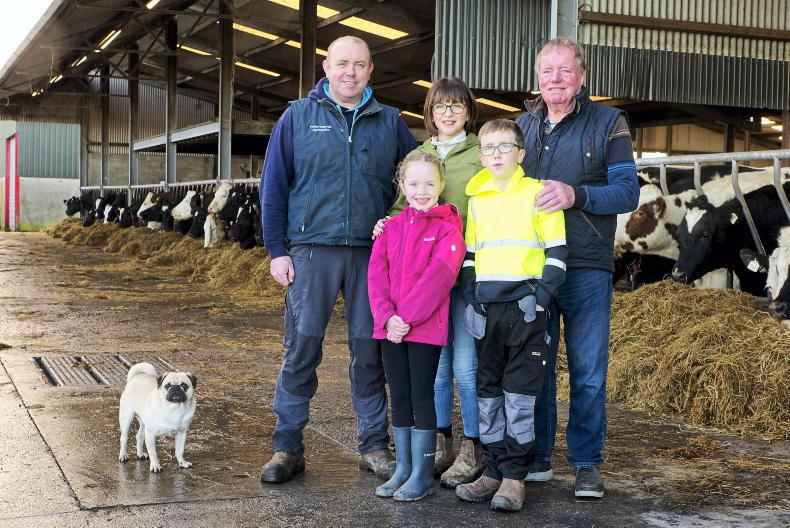
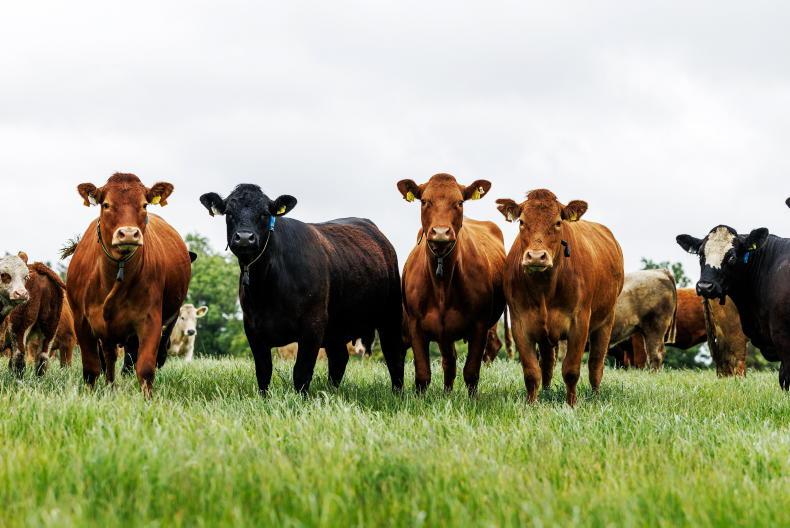
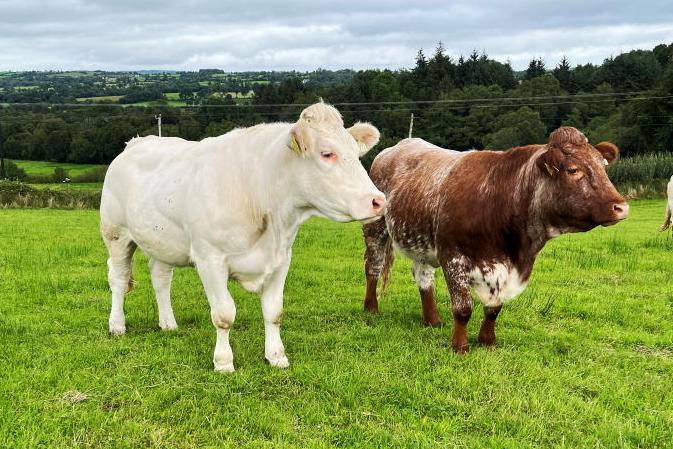
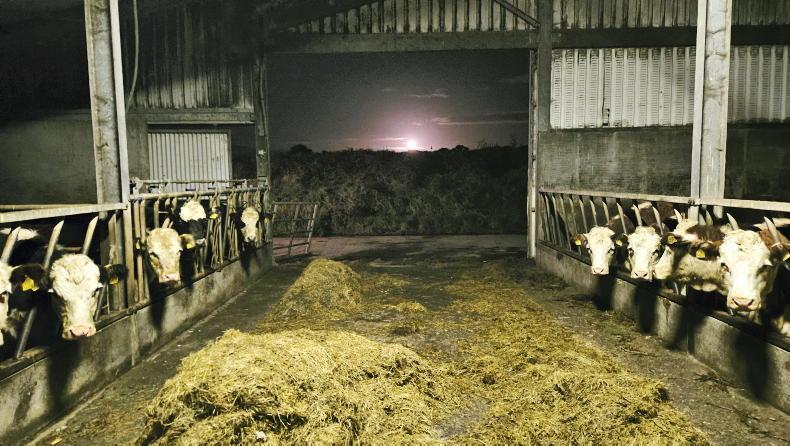
SHARING OPTIONS